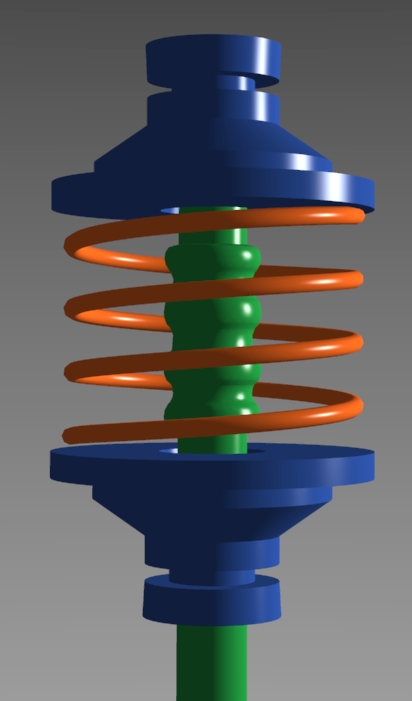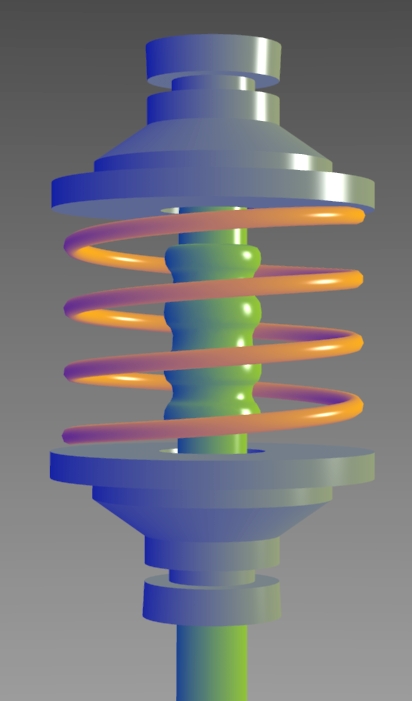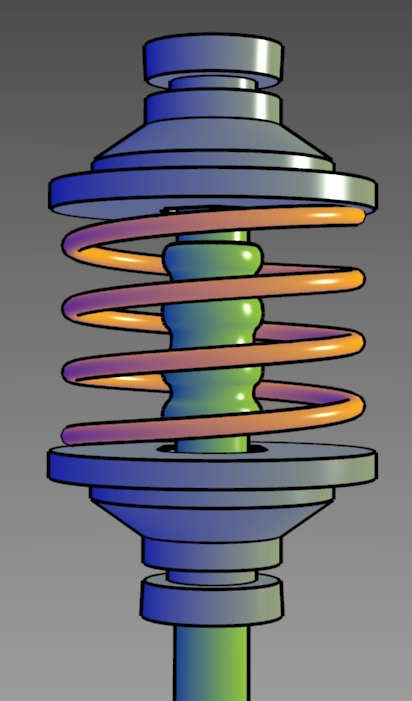


Next: Conclusion
Up: Implementation and Results
Previous: Edge Lines
The new shading model presented in Section 4.2.2 cannot be
implemented directly in high-level graphics packages that use Phong shading. However, the Phong lighting model can be used as a basis for
approximating our model. This is in the spirit of the nonlinear
approximation to global illumination used by Walter et
al. [37]. In most graphics systems (e.g., OpenGL) negative
colors for the lights can be used. Then Equation 4.1 can be
approximated by two lights in directions and with
intensities (kwarm - kcool)/2 and (kcool - kwarm)/2
respectively, and an ambient term of (kcool + kwarm)/2. This
assumes the object color is set to white. The Phong highlight should
be turned off to remove the jarring artifacts caused by the negative
blue light. Highlights could be added on systems with accumulation
buffers [16].
C++ Code fragment for generating the two lights, using the OpenGL API:
GLfloat R_warm, G_warm, B_warm,R_cool, G_cool, B_cool;
R_warm=207/255.0; G_warm=207/255.0; B_warm=145/255.0;
R_cool=80/255.0; G_cool=80/255.0; B_cool=145/255.0;
GLfloat hi_diffuse[] = { (R_warm-R_cool)/2.0,
(G_warm-G_cool)/2.0,
(B_warm-B_cool)/2.0 };
GLfloat lo_diffuse[] = { (R_cool-R_warm)/2.0,
(G_cool-G_warm)/2.0,
(B_cool-B_warm)/2.0 };
GLfloat hi_position[] = { 1, 1, EYE, 1 };
GLfloat lo_position[] = { -1, -1, EYE, 1 };
GLfloat ambient[] = { 0.5, 0.5, 0.5 };
glLightModelfv(GL_LIGHT_MODEL_AMBIENT, ambient);
glLightfv(GL_LIGHT0, GL_DIFFUSE, hi_diffuse);
glLightfv(GL_LIGHT0, GL_POSITION, hi_position);
glEnable( GL_LIGHT0 );
glLightfv(GL_LIGHT1, GL_DIFFUSE, lo_diffuse);
glLightfv(GL_LIGHT1, GL_POSITION, lo_position);
glEnable( GL_LIGHT1 );

|

|
| Phong shading model for colored object.
|
New shading model without edge lines.
|

|

|
| New shading model: edge lines, highlights, and cool-to-warm hue shift.
|
Approximation: Phong shading, two colored lights, and edge lines.
|
| Figure 5.2: Comparison of traditional computer graphics techniques and
techniques for creating technical illustrations.
|
This approximation is shown compared to traditional Phong shading and
the exact model in Figure 5.2. Using this
approximation, I was able to add the new shading to the Alpha_1
system as well.
A light source cannot be used for metals on a conventional API.
However, either environment maps or texture maps can be used to
produce alternating light and dark stripes.



Next: Conclusion
Up: Implementation and Results
Previous: Edge Lines



